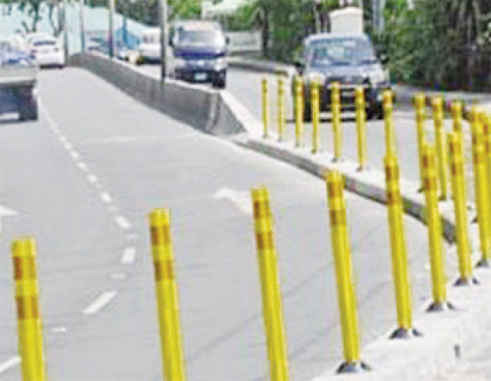
WHEN you think about road safety what comes to mind? Perhaps tyres, brakes, wet roads, speeding, but what about your eyes and your vision? Think about it. It is through our eyes that we get most of the information we need when using the road – we see signs, pedestrians, oncoming vehicles, judge distances and so on. Good vision is important for safety of all road users, (drivers and pedestrians alike) but it is an especially crucial part of driver fitness. Research reveals that a great number of drivers who need to wear corrective eyewear for driving are putting road safety aside either by not checking their eyes or by driving without wearing their prescribed eyewear.
HERE ARE SOME OF THE MANY WAYS IN WHICH THE EYES ARE IMPORTANT IN DRIVING:
(a) Visual acuity – the ability to focus and to see clearly with both eyes. With good visual acuity you will see detail very easily. In the case of drivers it is particularly vital in identifying road signs, cyclists, pedestrians and animals.
(b) Peripheral vision – the ability to see over a wider area without moving either the eyes or the head, sometimes called ‘side vision ‘ – what we see on the side when looking straight ahead.
(c) Depth perception: – the ability to judge space and relative distance between objects or between an object and the vehicle; it is the ability to see the world in three dimensions
(d) Night Vision – the ability to see in an area of low illumination, beyond your headlights, to see in the presence of glare of oncoming headlights and to recover quickly from its effects. Night vision deteriorates with age, and older drivers with reduced vision will need to exercise greater care when driving at dusk and at night and should have proper driving spectacles.
Our eyes control most of our movements and decisions while driving. Many motor vehicle accidents are caused by drivers’ poor vision.
SOME OF THE POSSIBLE CAUSES OF THESE ACCIDENTS ARE:
• The driver’s vision may be below the recommended standard. He or she could have a visual deficiency such as nearsightedness, farsightedness or astigmatism, conditions such as cataracts, glaucoma or diabetes.
• Drivers may not be wearing their spectacles or contact lenses prescribed for seeing at a distance
• Low visibility due to darkness or weather conditions including rain, adverse heat or cold
• Speeding. The normal field of vision is 180 degrees. However the faster you drive, the less you see to the side
• Glare in the driver’s eyes either from the sun or oncoming headlights
• A dirty windscreen
• Distraction of the driver from either inside or outside the vehicle, for example using phones while driving
• Reduced mental alertness, because of fatigue, alcohol, boredom or general physical condition.
TIPS FOR EASIER, SAFER DRIVING
• Wear your glasses if you have prescription glasses for driving
• Wear professionally prescribed sunglasses to protect your eyes from sun glare; they will also screen out harmful UV radiation
• Ensure that your windscreen is always clean and scratch free both inside and outside
• Pay attention to your headlights. Ensure that the glass is clean; bulbs are in good working condition and that the lighting system is properly positioned
• Avoid staring at oncoming headlights – it takes longer to recover from the glare – Rather, look a little to the left
• Give your eyes time to adapt to lower light levels when moving from brightly lit areas to darker areas
• Remember – “Speed must go down with the sun”
• Have your eyes examined once a year. Good driving needs good vision. It is your personal responsibility to be certain that you have the visual skills necessary to drive safely. The eyes, like the rest of your body change throughout life. Good vision five years ago does not imply good vision today.
SIGNS YOU MAY NEED AN EYE TEST
(A) you squint to read road signs or number plates that are 20 metres in the distance
(B) you see blurred or double images and see haloes around headlights, street lights and traffic lights
(C) You find it harder to see clearly at dusk or at night time
(D) You regularly suffer from headaches
(E) Your eyes are sore or tired at the end of the day
(F) You haven’t had your eyes examined in the past two years
Certain medical conditions can affect your eyes especially in the elderly. These include – dry eyes, pink eyes, cataracts, diabetes, glaucoma, macular degeneration, high blood pressure and of course natural aging processes.
The elderly should have their eyes examined more regularly as vision deteriorates much faster and reflexes slow down with age. Elderly drivers are often reluctant to give up driving which is understandable – their independence is threatened if their driving is taken away. Their own as well as the public safety should be the major consideration however.
IN CONCLUSION:
The ability to see clearly is essential for the safety of all road users. Operating a motor vehicle is a “rite of passage in much of our society. It is a good idea for teenagers to have their vision screened when first applying for a drivers’ license as this will reveal any undiagnosed vision problems. At the other end of the age spectrum many seniors feel devastated when vision, mental capacity or response time is impaired to the point that driving would endanger their safety as well as that of others. Anyone in between may also have vision problems.
So take care of your eyes – you need them to take care of you. Use our roads safely – see your future.










![Simón Bolívar - Liberator of the Americas [Photo credit: Venezuelan Embassy]](https://thevoiceslu.com/wp-content/uploads/2025/12/Simon-Bolivar-feat-2-380x250.jpg)

1 Comment